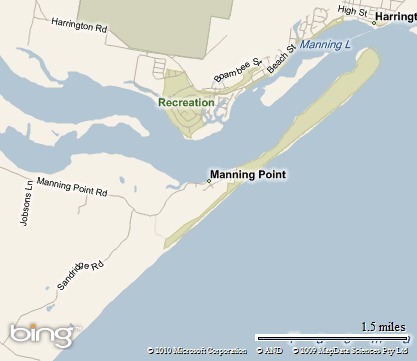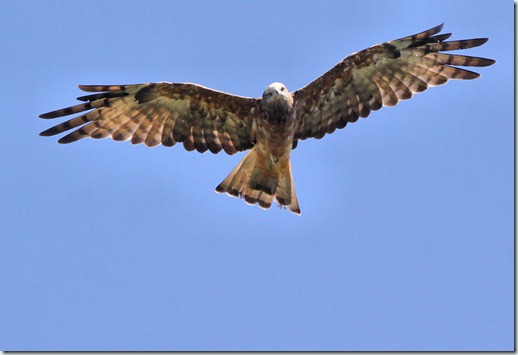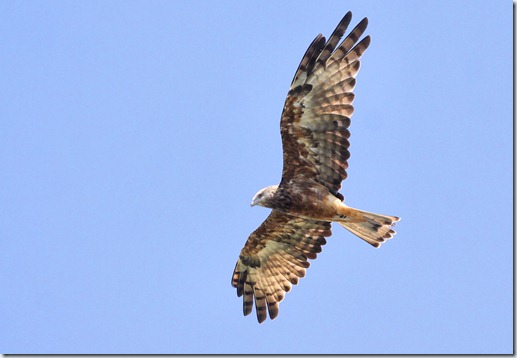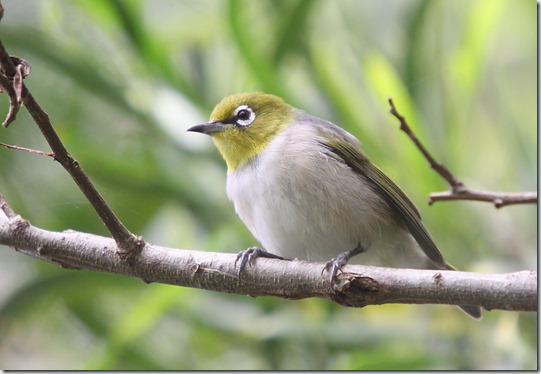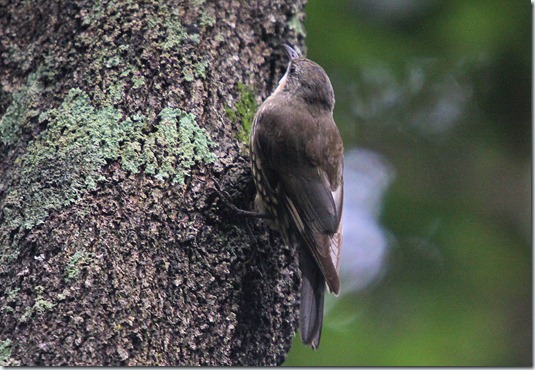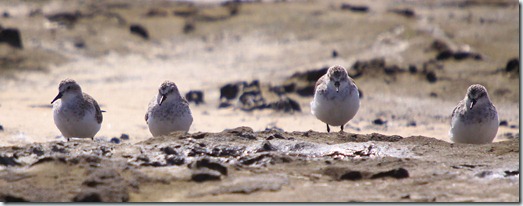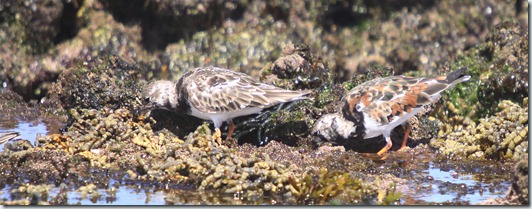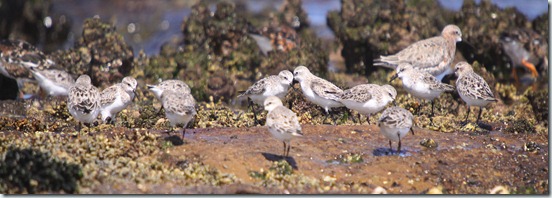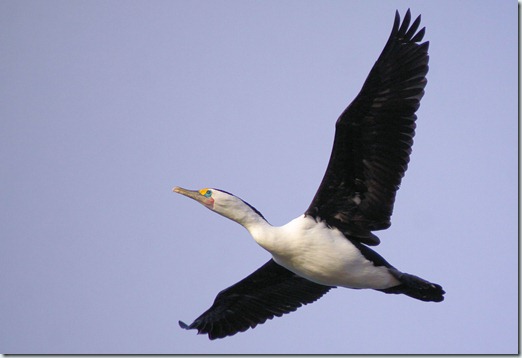 Having spent all day Saturday on the Pelagic trip – and consequently Saturday evening lying on the sofa moaning softly – I vowed to spend Sunday at the computer catching up on marking. I was rewarded by a Spangled Drongo coming to sit just 2-3 metres from me, perched on a tree-fern frond calling for some minutes. Luckily I had the camera beside me, unluckily I had to shoot through glass and flyscreen.
Having spent all day Saturday on the Pelagic trip – and consequently Saturday evening lying on the sofa moaning softly – I vowed to spend Sunday at the computer catching up on marking. I was rewarded by a Spangled Drongo coming to sit just 2-3 metres from me, perched on a tree-fern frond calling for some minutes. Luckily I had the camera beside me, unluckily I had to shoot through glass and flyscreen.
Monday, March 29, 2010
Tighes Hill
Sunday, March 28, 2010
Port Stephens Pelagic

From Newcastle to the continental shelf is quite a distance, so novocastrian birdos tend to head north or south to embark on Pelagic trips, to reduce the mainly uneventful travelling time. (BTW the stars indicate points where natural gas bubbles up.) The Hunter Bird Observers have organised regular trips from Nelson Bay this year, and though they are all fully booked, I got a call to say a spot had opened up this weekend.
And what a trip it was. Even thirty year veterans were adding ‘lifers’ to their list.

Crested Tern
Tahiti Petrel
Wedge-tailed Shearwater
Bird list:
White-bellied Storm-petrel
Wilson's Storm-petrel
Tahiti Petrel
Solander's Petrel
Sooty Shearwater
Streaked Shearwater
Fleshy-footed Shearwater
Short-tailed Shearwater
Wedge-tailed Shearwater
Brown Booby
Red-footed Booby
Pomarine Jaeger
Little Penguin
Great Crested Tern
Silver Gull
Pied Cormorant
Kitchener
I took the dogs to Poppethead Park in Kitchener, to swim in the dam. It wasn’t meant to be a birding outing but a large tree near the picnic area was abuzz with honeyeaters. I only know three eucalypts by name, and this wasn’t one of them – rough barked, pale yellow flowers, very tall. Birds very high in the canopy.
Lots of scarlet, yellow-faced and white-cheeked, some new holland, both adult and juvenile eastern spinebills, little lorikeets heard at the top of the tree but hard to see, and one regent honeyeater flew in only to head off again almost immediately.
Wednesday, March 24, 2010
Manning Point
Manning Point is on an island in the Manning River delta, and with river one one side, ocean on the other, a lagoon in the middle, and remnant rainforest, heaths, gardens and mudflats providing a range of habitats it supports a variety of birds.
The nesting Fairy Terns had dispersed but there were a number of them flying over the river. Pelican were there in force, along with Silver Gulls, but also several types of heron and egrets, good numbers of ducks, lorikeets in the hundreds, and lots of honeyeaters.
A notable sighting was a young Spectacled Monarch, an uncommon visitor to the area. He obligingly hung around for some time.
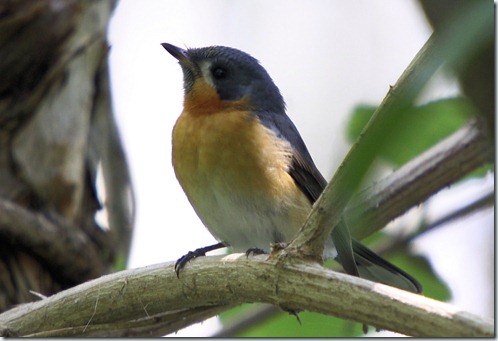
Bird list:
Brown Quail
Australian Wood Duck
Mallard
Pacific Black Duck
Grey Teal
Little Pied Cormorant
Pied Cormorant
Little Black Cormorant
Great Cormorant
Australian Pelican
White faced Heron
Little Egret
Great Egret
Striated Heron
Australian White Ibis
Royal Spoonbill
Osprey
Square tailed Kite
White bellied Sea Eagle
Buff banded Rail
Purple Swamphen
Dusky Moorhen
Red capped Plover
Bar tailed Godwit
Eastern Curlew
Pied Oystercatcher
Masked Lapwing
Silver Gull
Crested Tern
Little Tern
Rock Dove
White headed Pigeon
Spotted Turtle Dove
Galah
Rainbow Lorikeet
Scaly breasted Lorikeet
Musk Lorikeet
Yellow tailed Black Cockatoo
Fan tailed Cuckoo
Azure Kingfisher
Laughing Kookaburra
Superb Fairy wren
White throated Treecreeper
White browed Scrubwren
Yellow-rumped Thornbill
Red Wattlebird
Little Wattlebird
Eastern Yellow Robin
Noisy Miner
Lewin's Honeyeater
White cheeked Honeyeater
Brown Honeyeater
Grey Shrike thrush
Spectacled Monarch
Magpie-lark
Rufous Fantail
Grey Fantail
Willie Wagtail
Figbird
Black faced Cuckoo shrike
Pied Butcherbird
Australian Magpie
Pied Currawong
Redbrowed Finch
Silvereye
Australian Raven
Welcome Swallow
Sunday, March 21, 2010
Manning Point
Last weekend I went to Manning Point for a 24 hour camp with the dogs, lured by the promise of good weather, which didn’t eventuate. So this weekend we went back again. We’d barely set up the tent and put the billy on for tea when this young Square-tailed Kite circled the campground.
The Square-tailed Kite Lophoictinia isura is a medium sized raptor endemic to mainland Australia. It is a species which can spend many hours on the wing with little active flight and can be observed either soaring high over open country, scrub or woodland or close to tree tops and through the tree canopy. It is a specialist hunter of passerines, especially honeyeaters and insects in the tree canopy, picking most prey items from the outer foliage by skimming and circling just above or below the tree tops.
The paperbarks and eucalypts in the area were in full flower, attracting lorikeets and honeyeaters in the hundreds, so it would have been a top spot for him, though I’m pleased I didn’t have to witness his lunch.
The Square-tailed Kite is sparsely distributed throughout the Australian mainland, primarily within 250km of the coast and generally absent from treeless inland areas and from dense forests.
Monday, March 15, 2010
Wambina Nature Reserve
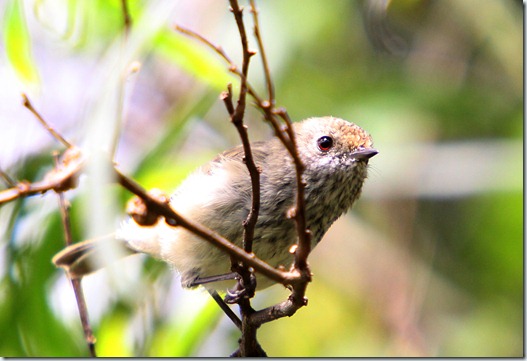
Saturday, March 13, 2010
Soldier’s Point
Saturday, March 6, 2010
Flight Initiation Distance
I’ve been reading about flight initiation distance in birds – an issue of concern to wildlife managers as they try to reduce human disturbance by using FID to develop set back distances for paths and viewing areas in bird sanctuaries. And an area of interest for bird photographers.
While the benefits of leaving in the face of a predation threat are fairly obvious, there are also costs in leaving and benefits in staying (the energy costs in flight, the benefits in remaining in a good foraging spot or continuing an activity such as courtship), so birds could be expected to vary their FID on the basis of an assessment of the relative costs and benefits of leaving or staying.
In one study, observers walked towards a bird at a constant pace of approximately 1.0 metre per second, while maintaining eye contact, and recorded the distance at which the bird initiated flight. Each flush was conducted using one of three different treatments: one person directly approached a bird; two people side–by–side approached a bird; and two people directly behind one another approached a bird. The study found that invariably the bird flushed sooner when there were two observers, but that there was little difference in the FID whether the observers walked side-by-side or directly behind one another.
Another study found that for 64 of 68 species of Australian birds, the starting point of the observer had a significant impact on the FID. The further away the observer was when spotted by the bird, the greater the flight initiation distance. The researchers hypothesised that this may have been because of the energy costs of continually monitoring an approaching predator. They also noted that a range of factors such as time of day, season of the year, and acclimatization to humans affected FID.













